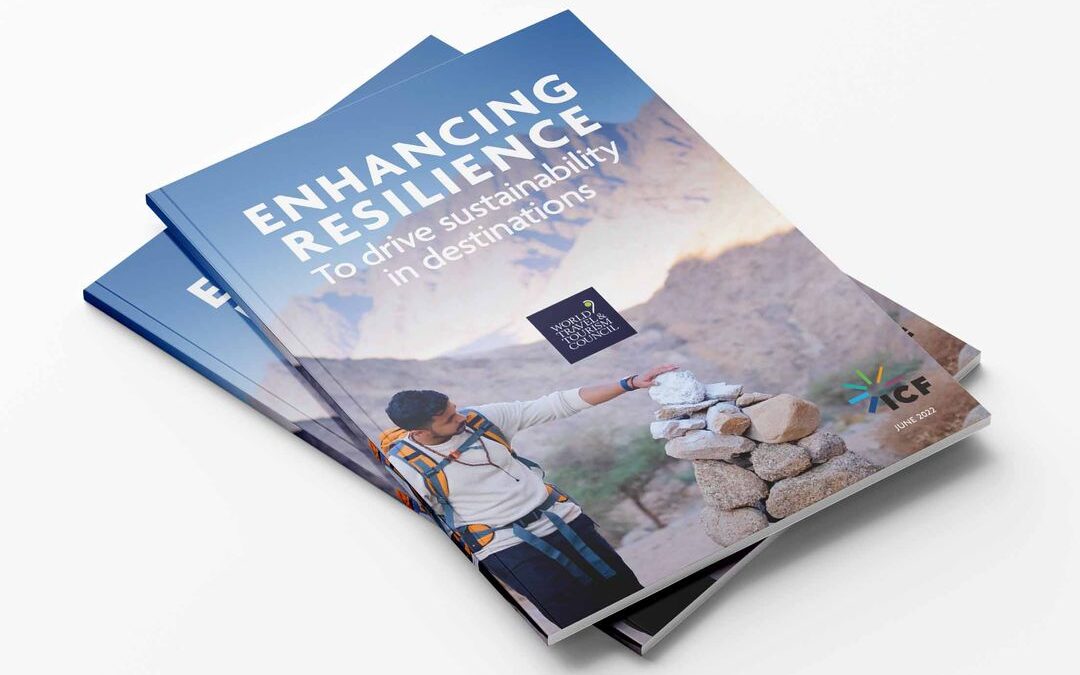This report aims to provide practical, structured inspiration to destinations as they think about resilience and sustainability. As destinations grapple with stresses and shocks, ranging from pandemics to electricity or water shortages to extreme weather events, it is critical to implement transformational shifts to ensure a more resilient and inclusive future.
This report contains information to clarify:
- What is tourism resilience and how does it support sustainability goals in destinations?
- How are destinations addressing resilience priorities?
- Destination focused Case Studies
- Recommendations
1. What is tourism resilience and how does it support sustainability?
Tourism resilience refers to a destination’s capacity to anticipate, absorb, recover from, and adapt to disruptions, such as pandemics, water or energy shortages, or extreme weather. This capacity is crucial for maintaining long-term sustainability because:
- It protects natural assets (coastlines, biodiversity) that form the foundation of tourism appeal.
- It ensures infrastructure stability and business continuity.
- It cushions the local economy and workforce during crises.
- It strengthens community cohesion and inclusiveness through engagement and shared solutions.
2. How are destinations addressing resilience priorities?
Destinations apply resilience strategies across five key pillars:
- Environmental resilience: land-use policies, biodiversity protection, carbon absorption.
- Infrastructure resilience: strengthening buildings and transport, establishing crisis protocols.
- Economic resilience: financial aid to SMEs, flexible business models, workforce training.
- Social resilience: involving communities in planning, balancing resident and visitor needs.
- Resource resilience: diversified water and energy sources, efficiency programs, renewable energy use.
3. Case Studies: Destination-focused examples
While the WTTC report includes in-depth case studies showcasing successful resilience in practice, secondary sources reinforce this:
- Puerto Rico & Philippines: implemented climate risk assessments, biodiversity plans, and hazard mapping to shield natural assets.
- The Bahamas: integrated local sourcing and community employment into tourism policies.
4. Recommendations
The report advocates the following actions:
- Adopt a holistic, multi-pillar framework—covering environment, infrastructure, economy, society, and resources—for evaluating resilience gaps.
- Engage communities and SMEs in collaborative planning and shared governance structures.
- Invest in resilient infrastructure (e.g., climate-proof buildings, water systems, emergency planning).
- Support SMEs financially and with training, focusing on business adaptability and workforce resilience.
- Foster sustainable resource management—prioritize diversification, efficiency, and renewables.
- Learn through monitoring and iteration, using data analytics and evidence-based planning (e.g., hazard mapping, carrying-capacity metrics).
Why this matters
Integrating resilience directly bolsters sustainability:
- It preserves core tourism assets (environmental, cultural), making destinations viable long-term.
- It protects livelihoods and economies, ensuring local benefits endure even during disruptions.
- It empowers communities and SMEs, making tourism inclusive and adaptable.
- It encourages responsible resource use, aligning with global sustainability targets.
Next steps for stakeholders:
- Conduct a resilience audit using the five-pillar framework.
- Collaborate with local communities and SMEs from the outset.
- Build capacity in crisis response, sustainable infrastructure, and resource management.
- Track progress and adjust strategies with ongoing data collection (e.g., visitor pressure, hazard mapping).

